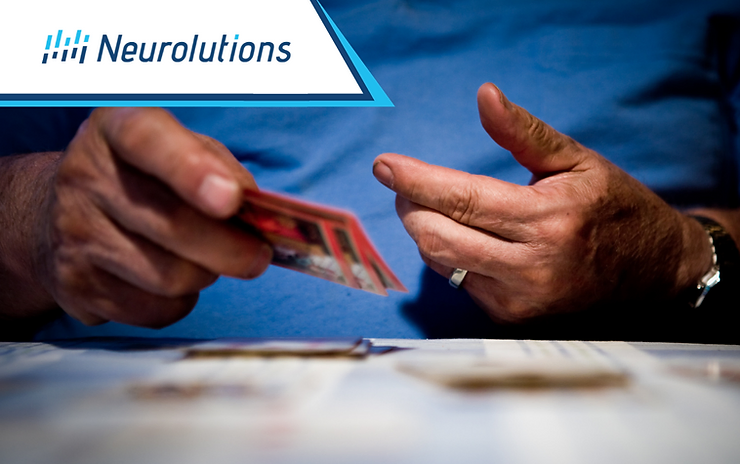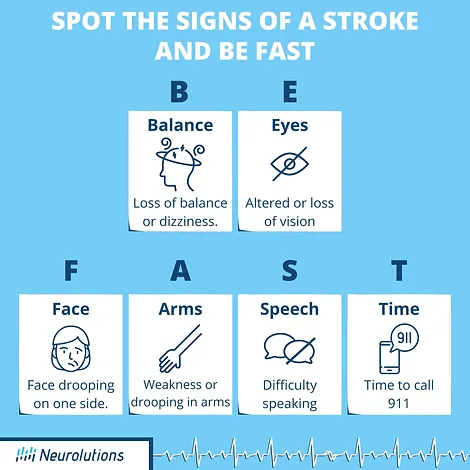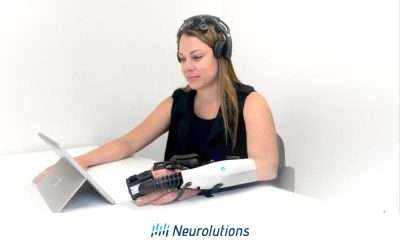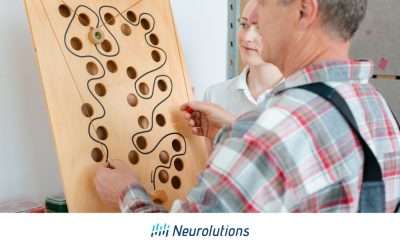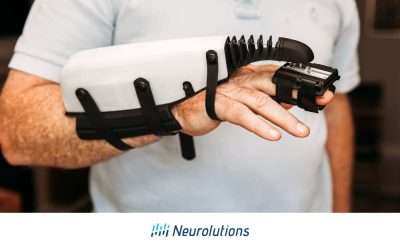Strokes are a Leading Cause of Paralysis and Disability
Stroke is the most common neurological disorder in the U.S., with 795,000 strokes per year.[1] Among stroke survivors, 15-30% experience lasting impairments, and approximately 20% require institutional care.[2] In survivors 65 years or older, 50% had hemiparesis, 30% were unable to walk without assistance, and 26% received institutional care six months post-stroke.[3] These challenges are significant because the most substantial recovery in motor function occurs over the first 30 days. However, individuals with moderate to severe strokes continue to experience some recovery for 30-90 days.[4] The large patient population facing a reduced quality of life due to limited arm function and requiring significant medical resources underscores the urgent need to develop new methods and technologies for improving functional rehabilitation in chronic stroke survivors.
What is a Stroke?
There are two types of strokes, ischemic and hemorrhagic. All strokes are caused by a lack of blood supply to the brain, lead to tissue injury, and result in the death of vital cells of the brain known as neurons.
Ischemic Stroke
An ischemic stroke occurs when the blood supply to any part of the brain is either fully or partially interrupted, preventing tissues of the brain from getting the oxygen it needs to function.
Hemorrhagic Stroke
A hemorrhagic stroke occurs when blood from an artery begins bleeding into the brain, subsequently damaging areas of the brain, and interrupting function. The two main types of hemorrhagic stroke are:
- Intracranial Hemorrhage: An intracranial hemorrhage is when bleeding occurs inside the brain.
- Subarachnoid Hemorrhage: A subarachnoid hemorrhage occurs when bleeding occurs between the brain and the membranes which cover it.
Strokes often can lead to arm weakness on one side of the body. It is important if you or a loved one are experiencing any signs or symptoms of a stroke, you immediately call 911 or seek help at the nearest emergency room. Signs and symptoms of a stroke include the follows:
- Sudden numbness or weakness of the face, arm, or leg, especially when it occurs on only one side of the body
- Sudden confusion or change in mental status
- Sudden difficulty speaking
- Sudden trouble seeing in one or both eyes
- Difficulty walking
- Sudden dizziness or loss of balance
- Sudden and severe headache that is out of the normal
- Nausea and vomiting
- Total loss of consciousness
How Can Games Help Stroke Survivors Recover?
New research highlights the importance of the integration of games for stroke recovery or “gaming” technology for rehabilitation to improve arm function. The importance of mass repetition and motor imagery to increase the use of the affected upper extremity following a stroke has been well understood by the stroke community for years. However, it is more recent that research supports the use of gaming or virtual reality to support these important systems for rehabilitation.
1. Motor skill rehabilitation:
As a whole, certain games may help stroke recovery in the following ways. Motor skill rehabilitation – high repetition, eye-hand or eye-foot coordination and timing challenges, motor imagery, strengthening, and endurance, to increase the use of the limbs and trunk
2. Cognitive rehabilitation:
Cognitive rehabilitation: decision making, visual-spatial awareness, attention, processing, sequencing and memory, reactive movement, and response to commands
3. Visual rehabilitation:
Visual rehabilitation: gaze stability training, visual scanning, training of oculomotor and visual control, depth perception, and visual discrimination
4. Engagement and wellness:
Engagement and wellness: ease stress and anxiety, reduce pain, challenge inner competition, and serve as a distraction.
5. Functional task training:
Functional task training: awareness of the environment, weight shifting, reach, and transporting, and manipulating for ADLs, sequencing and logic tasks for progression of daily tasks
Survivors of a stroke may feel defeated by traditional therapy, but games or virtual reality systems can provide visual feedback in real-time on their performance and improvement compared to traditional rehabilitation methods.
The Best Games for Stroke Recovery
Currently, there are many products available on the market which can be added to traditional therapy to increase upper extremity gains following a stroke.
The use of games or virtual reality can be a new pathway to creating new motor connections in the brain and building up an ability to increase the ability to complete arm movement. There are two types of gaming rehabilitation games:
1) Immersive Gaming for Neuro-Recovery
Immersive gaming requires the wearing of goggles with the use of other equipment to integrate movement into the entire immersive 3D world.
One game, VR-Mill, utilizes a Virtual Reality Headset, a treadmill, and a 3D motion capture system. This “exergame” involves walking on a treadmill while performing cognitive exercises that are being visualized via the headset. The 3D Motion Capture system tracks the player’s movements and then shows them in the virtual environment. The findings from a 2021 qualitative study suggested that this fully immersive VR game was acceptable and potentially useful as part of gait rehabilitation after stroke, as it was positively received by both stroke survivors and clinicians working within stroke rehabilitation.
- REAL System, by Penumbra, Inc.
- MindMotion
- VR-Mill
2) Non-Immersive Gaming for Neuro-Recovery
Non-immersive platforms run on a 2D system and movements are simulated using a third-party pairing such as a joystick, mouse, sensor, or moveable robot extremity.
Examples of gaming technologies that have demonstrated a substantial following among clinicians and stroke survivors alike include the following:
- Neofect Smart Glove
- Saebo VR
- Motus Nova Motus Hand
- Flint Rehab FitMi
- Flint Rehab Music Glove
This is not an all-inclusive list, as there are many more products available for stroke survivors and therapists. Speak to your therapist if you feel gaming or virtual reality could help in your upper extremity rehabilitation process.
It is also important to note that rehabilitation games are not limited to virtual reality and computer-based integration activities. Games are any purposeful activity motivating stroke survivors and implementing high repetition and motor feedback. This can look like:
- Flipping over cards as quickly as you can
- Stacking dominos
- Pinching coins to put into piggy banks
- Tossing bean bags to targets or even coloring.
Overall, The best “games” for each stroke survivor are what can provide the best motivation to the individual.
The Benefits of Video Games & How They Can Help You Heal from a Stroke
The Future is here to stay. Many companies and health care professionals across the board are integrating the use of virtual reality as an adjunct treatment to traditional therapy. Improvements to existing technologies are being made daily. Stroke survivors now have the ability to take advantage of new techniques and technologies that provide opportunities that may increase and unlock new avenues for upper extremity rehabilitation post-stroke.
References:
[1] Lloyd-Jones, D., et al., Heart Disease and Stroke Statistics – 2009 Update: A report from the American Heart Association Statistics Committee and Stroke Statistics Subcommittee. Circulation, 2009, 119(3): p. 480-486.
[2] The atlas of heart disease and stroke. J. Mackay and G. Mensah; with S. Mendis and K. Greenland. World Health Organization (2004); and Lloyd-Jones D, et al., Heart Disease and Stroke Statistics – 2009 Update: A Report from the American Heart Association Statistics Committee and Stroke Statistics Subcommittee. Circulation, 2009; 119(3):p. 480-486.
[3] Moan, Merete Endresen, et al. “Experiences of Stroke Survivors and Clinicians with a Fully Immersive Virtual Reality Treadmill Exergame for Stroke Rehabilitation: A Qualitative Pilot Study.” Frontiers, Frontiers, 1 Jan. 1AD, https://www.frontiersin.org/articles/10.3389/fnagi.2021.735251/full#:~:text=The%20findings%20from%20this%20qualitative,clinicians%20working%20within%20stroke%20rehabilitation.

